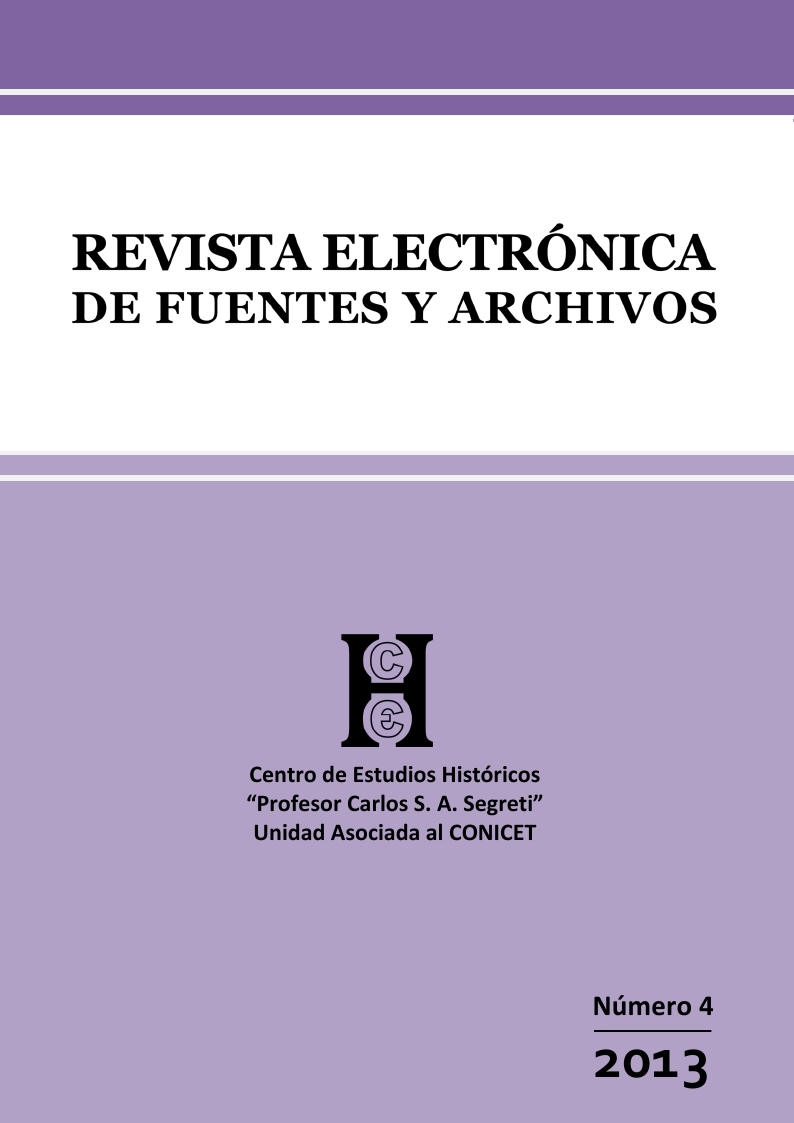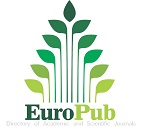Más allá de la vitrina: La historia de los instrumentos científicos
Palabras clave:
instrumentos científicos, cultura material, museos, métodosResumen
La historia de la ciencia desde siempre e interesó por los instrumentos científicos, sin embargo, en los últimos años, hubo un cambio en lo que concierne al carácter y alcance de ese interés. Para ilustrar las posibilidades de un análisis centrado en los artefactos, este trabajo presenta dos ejemplos: un espectroscopio de 1870 y una balanza geofísica de torsión. Ellos nos permiten mostrar cómo los temas de la historia de la ciencia contemporánea se cruzan con los debates alrededor de los instrumentos y la cultura material, incluyendo aquellos problemas ligados a su exhibición.
Descargas
Referencias
ANDERSON Katharine, “Looking at the sky: the visual context of Victorian meteorology”, British Journal for the History of Science, vol. 36, núm. 3, 2003, pp. 301-332.
ANDERSON Katharine [et. al.], “Reading instruments: objects, texts and museums”, Science and Education, vol. 22, issue 5, 2013, pp. 1167-1189.
ANDERSON R.G.W. [et. al.], Making instruments count: essays on historical scientific instruments, London, Variorum, 1993.
ARMSTRONG Isobel, Victorian glassworlds: glass culture and the imagination , 1830-1880, New York, Oxford University Press, 2008.
ARNOLD Ken and Thomas SÖDERQVIST, “Medical Instruments in Museums: Immediate Impressions and Historical Meanings”, Isis, vol. 102, núm. 4, 2011, pp. 718-729.
AUSLANDER Leora [et. al.], “A Conversation: historians and the study of material culture", American Historical Review, vol. 114, núm. 5, 2009.
BAIRD Davis, Thing knowledge: a philosophy of scientific instruments, Berkeley, University of California Press, 2004.
BARAD Karen, Meeting the universe halfway: quantum physics and the entanglement of matter and meaning, Durham, Duke University Press, 2007.
BENNETT Jane, Vibrant matter: a political ecology of things, Durham, Duke University Press, 2010.
BOURGUET Marie-Noëlle, Christian LICOPPE, and Heinz Otto SIBUM (eds.), Instruments, travel, and science: itineraries of precision from the seventeenth to the twentieth centuries, New York, Routledge, 2002.
BROWN Bill (ed.), Things, Chicago, University of Chicago Press, 2004.
BUD Robert and Deborah WARNER, Instruments of science: An historical encyclopedia, New York, Science Museum, London, and National Museum of American History, Smithsonian Institution, in association with Garland Publishers, 1998.
CAPLE Chris, Objects: reluctant witnesses to the past, New York, Routledge, 2006.
CARROLL-BURKE Patrick, “Tools, Instruments and Engines: Getting a Handle on the Specificity of Engine Science”, Social Studies of Science, vol. 31, núm. 4, 2001, pp. 593-625.
CHANG Hasook, Inventing temperature: Measurement and scientific progress, New York, Oxford University Press, 2007.
DASTON Lorraine, “Speechless,” Things That Talk, New York, Zone, 2007, pp. 9-26.
FINDLEN Paula, Possessing nature: Museums, collecting, and scientific culture in early modern Italy, Berkeley, University of California Press. 1994.
FLEMING E. McClung, “Artifact Study: A Proposed Model”, Thomas SCHLERETH (ed.), Material Culture Studies in America, Nashville, University of Kentucky Press, 1982, pp. 162-173.
GALISON Peter, Image and logic: A material culture of microphysics, Chicago, University of Chicago Press, 1997.
GIERYN Thomas, “What buildings do”, Theory and Society, vol. 31, 2002, pp. 35-74.
GINGERICH Owen, The book nobody read: chasing the revolutions of Nicolas Copernicus, New York, Walker and Company, 2004.
HANKINS Thomas L. and Robert SILVERMAN, Instruments and the Imagination, Princeton, Princeton University Press, 1995.
HECHT Gabrielle, “A Cosmogram for Nuclear Things”, Isis, vol. 98, 2007, pp. 100-108.
HEERING Peter and Roland WITTJE (eds.), Learning by doing: Experiments and instruments in the history of science teaching, Stuttgart, Franz Sterner Verlag, 2011.
HENTSCHEL Klaus, Mapping the Spectrum: Techniques of Visual Representation in Research and Teaching, Oxford, Oxford University Press, 2002.
JOHNS Adrian, The Nature of the book: print and knowledge in the making, Chicago, University of Chicago Press, 1998.
JULIEN Marie-Pierre, Céline ROSSELIN, La culture matérielle, Paris, Découverte, 2005.
KEMP Martin, "Intellectual ornaments: style, function and society in some instruments of art", Joan H. PITTOCK and Andrew WEAR (eds.), Interpretation and cultural history, New York, St. Martin's, 1991, pp. 135-152.
KOEN Vermier, “Athanasius Kircher's magical instruments: an essay on 'science,' 'religion' and applied metaphysics”, Studies in History and Philosophy of Science, vol. 38, 2007, pp. 363-400.
LANGFORD Martha, Suspended conversations: the afterlife of memory in photographic albums, Montreal, McGill-Queen’s University Press, 2001.
LATOUR Bruno and Peter WEIBEL (eds.), Making Things Public: Atmospheres of Democracy, Cambridge, MA, MIT Press, 2005.
LINDQVIST Svante (ed.), Museums of modern science, Canton, MA, Science History Publications, 2000.
LOURENCO Marta and Samuel GESSNER, “Documenting collections: cornerstones for more history of Science in museums”, Science and Education, 23, 2012.
MACDONALD Sharon (ed.), Politics of display: museums, science, culture, New York, Routledge, 1998.
MARCUS George E., “Ethnography In/Of the World System: The Emergence of Multi-Sited Ethnography”, Annual Review of Anthropology, vol. 24, 1995, pp. 95-117.
MILLER Andrew H., Trip to Britain and Europe correspondence and report (1929), Archives Canada. Miller fonds, MG30 B167.
PANTALONY David, “Biography of an Artefact: The Theatron Junior and Canada’s Atomic Age”, Scientia Canadensis, vol. 34, 2011, pp. 51-63.
PEARCE Susan (ed.), Exploring science in museums, London, Athlone Press, 2005.
PEARCE Susan (ed.), Interpreting objects and collections, New York, Routledge, 1994.
PEARSON David, Books as history: the importance of books beyond their texts, London, British Library, 2011.
RHEINBERGER Hans-Jorg, An Epistemology of the concrete: twentieth century histories of life, Durham, Duke University Press, 2010.
SCHAFFER Simon, “Easily Cracked: Scientific Instruments in States of Disrepair”, Isis, vol. 102, 2011, pp. 706-717.
SCHAFFER Simon [et. al.] (eds.), The Brokered world: go-betweens and global intelligence, 1770-1820, Sagamore Beach, Science History, 2009.
SCHIFFER Michael and James SKIBO, People and Things: A Behavioural approach to material culture, New York, Springer, 2008.
SCHRAMM Helmer, Ludger SCHWARTE (eds.), Instruments in Art and Science, Berlin, Walter de Gruyter, 2008.
SECORD Anne, “Pressed into service: specimens, space, and seeing in botanical practice”, David N. LIVINGSTONE and Charles W. J. WITHERS (eds.), Geographies of nineteenth-century science, Chicago, Chicago University Press, 2011, pp. 283-310.
SIBUM H. Otto, "Reworking the mechanical value of heat: instruments of precision and gestures of accuracy in early Victorian England", Studies in History and Philosophy of science vol. 26, núm. 1, 1995, pp. 73-106.
SÖDERQVIST Thomas (ed.), Historiography of Contemporary Science and Technology, Amsterdam, Harwood Academic, 1997.
SÖDERQVIST Thomas and Adam BENCARD, “Do Things Talk?”, Susanne LEHMANS-BRAUN, Christian SICHAU, Helmuth TRISCHLER (eds.), The Exhibition as product and generator of scholarship, Berlin, Max Planck Preprints, 2010, pp. 93-102.
SÖDERQVIST Thomas, Adam BENCARD and Camilla MORDHORST, “Between meaning culture and presence effects: Contemporary Biomedical Objects as a challenge to museums”, Studies in History and Philosophy of Science, vol. 40, 2009, pp. 431-38.
STRANO Giorgio [et. al.] (eds.), European collections of scientific instruments 1550-1750, Brill, 2009.
TAUB Liba, “Reengaging with Instruments”, Isis, vol. 102, núm. 4, 2011, pp. 689-696.
TURKLE Sherry (ed.), Evocative objects: things we think with, Cambridge, MA, MIT Press, 2007.
VAN HELDON Albert and Thomas L. HANKINS, “Introduction: Instruments in the History of Science”, OSIRIS, vol. 9, 1994, pp. 1-6.
WARNER Deborah, “What is a scientific instrument, when did it become one, and why?”, British Journal for the History of Science, vol. 23, 1990, pp. 83-93.
WITTJE Roland, “A Proton Accelerator in Trondheim in the 1930s”, Historical Studies in the Physical and Biological Sciences, vol. 35, 2004, pp. 115-152.
Descargas
Publicado
Número
Sección
Licencia
Derechos de autor 2013 Katharine Anderson

Esta obra está bajo una licencia internacional Creative Commons Atribución-NoComercial-CompartirIgual 4.0.
Se puede compartir (copiar y redistribuir el material en cualquier medio o formato) y adaptar (remezclar, transformar y construir a partir del material), siempre que: a) se cite la autoría y la fuente original de su publicación (revista, editorial y URL de la obra); b) no se use con fines comerciales; c) la distribución de las obras derivadas se haga con una licencia igual a la que regula la obra original.





















